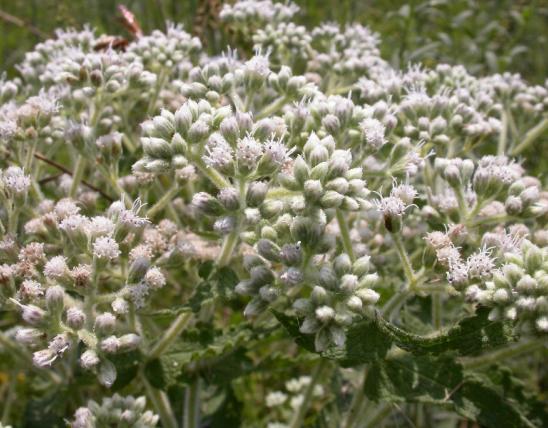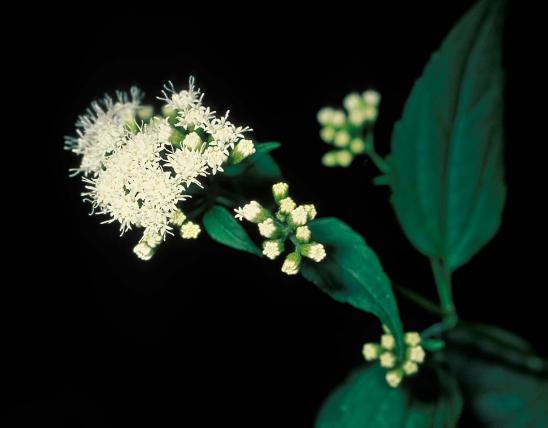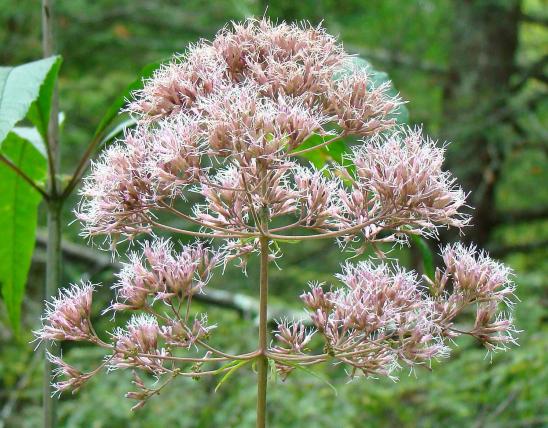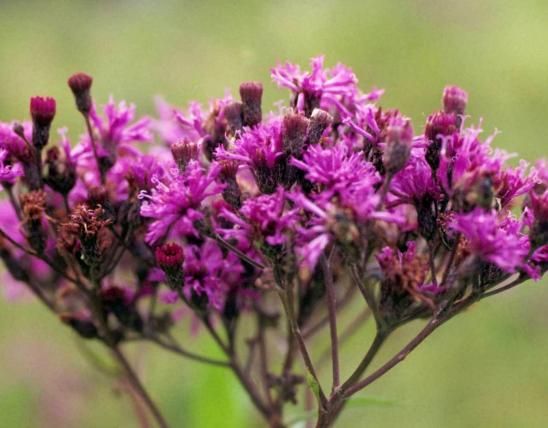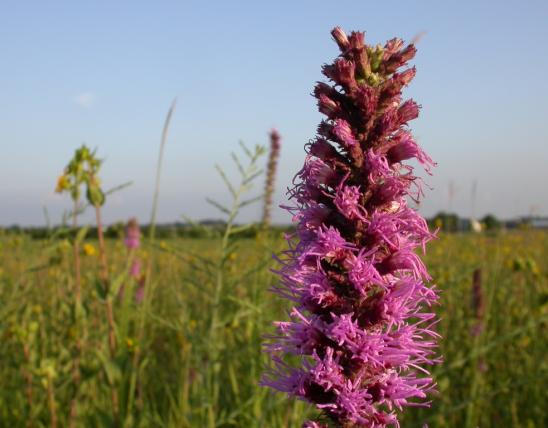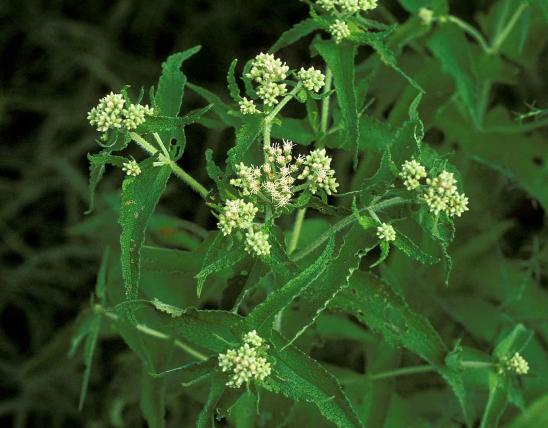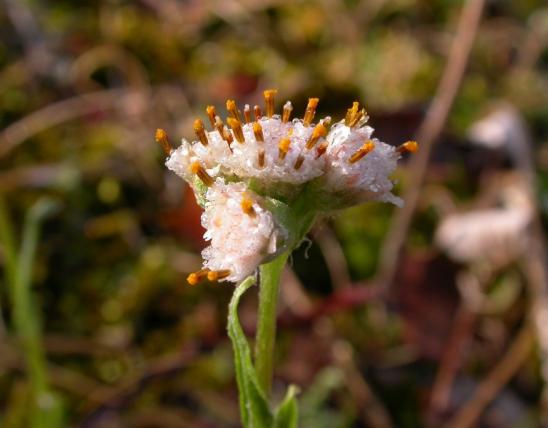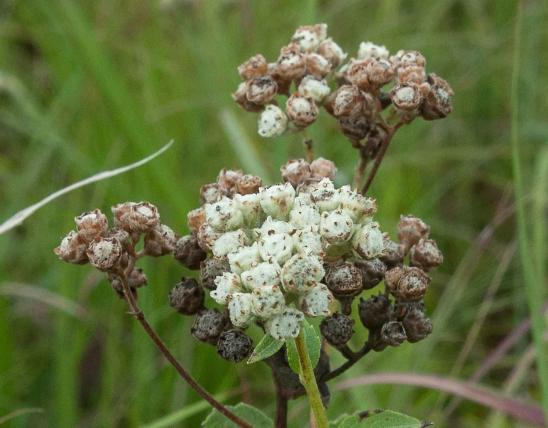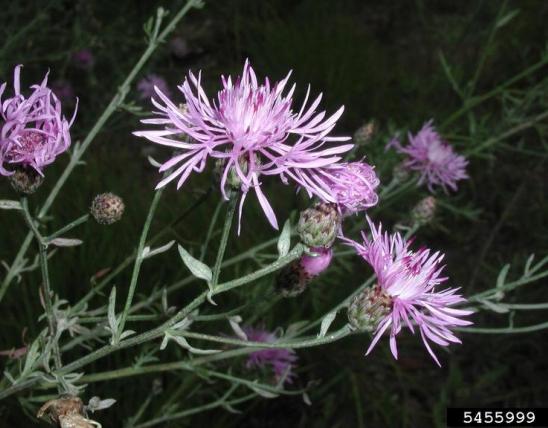
Mist flower, or wild ageratum, is a vigorous perennial bearing fluffy-looking, bluish-purple flowerheads. It often occurs in large stands. The flowerheads are in dense clusters (35–70 tiny florets per head), terminal or arising from the leaf axils, and blue or violet (rarely white). Blooms July–October. The leaves are opposite on short stems, ovate to triangular, with large teeth.
Similar species: The nonnative annual ageratum (Ageratum conyzoides) is sold as a bedding plant for flower gardens. That plant, however, is an annual with thin, fibrous roots, while mist flower is a vigorous perennial with a mass of interwoven rhizomes. Both are in the same tribe as bonesets, thoroughworts, and snakeroot.
Height: normally 12–18 inches.

Scattered, mostly south of the Missouri River.
Habitat and Conservation
Occurs in bottomland forests, swamps, banks of streams and rivers, margins of ponds and lakes, marshes and fens, ditches, gardens, railroads, roadsides, and shaded to open disturbed areas.
Human Connections
Under cultivation it spreads rapidly with an interwoven mass of roots and is highly aggressive. Cut back the plants during the summer to encourage a more compact growth habit before flowering begins in August. Where its spreading isn't a problem, it provides good color until the first frost.
Ecosystem Connections
Butterflies, skippers, and bees are strongly attracted to the flowers. Other insects eat the foliage. Not many mammals eat this plant because of its bitter taste.


























